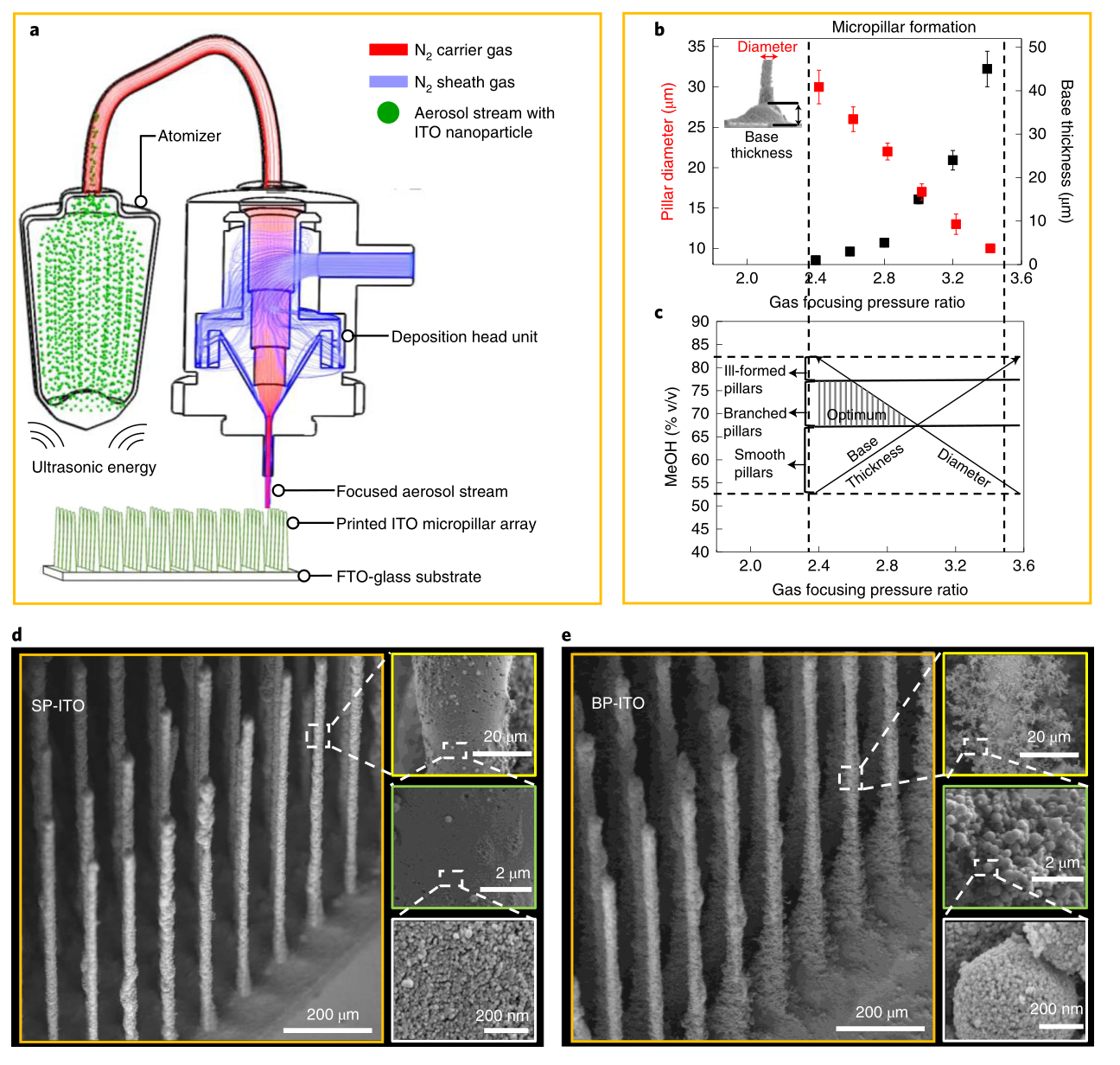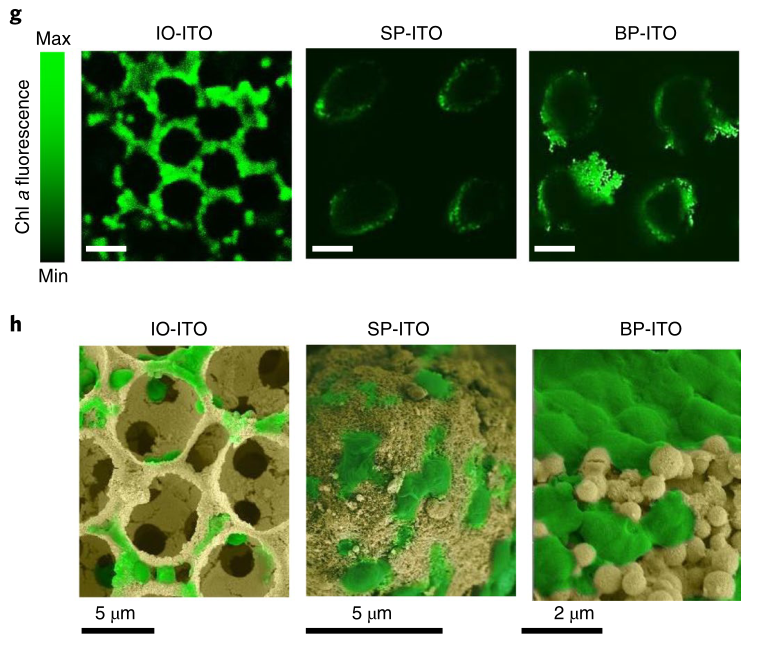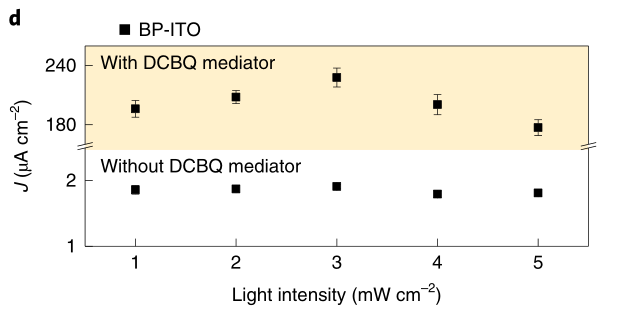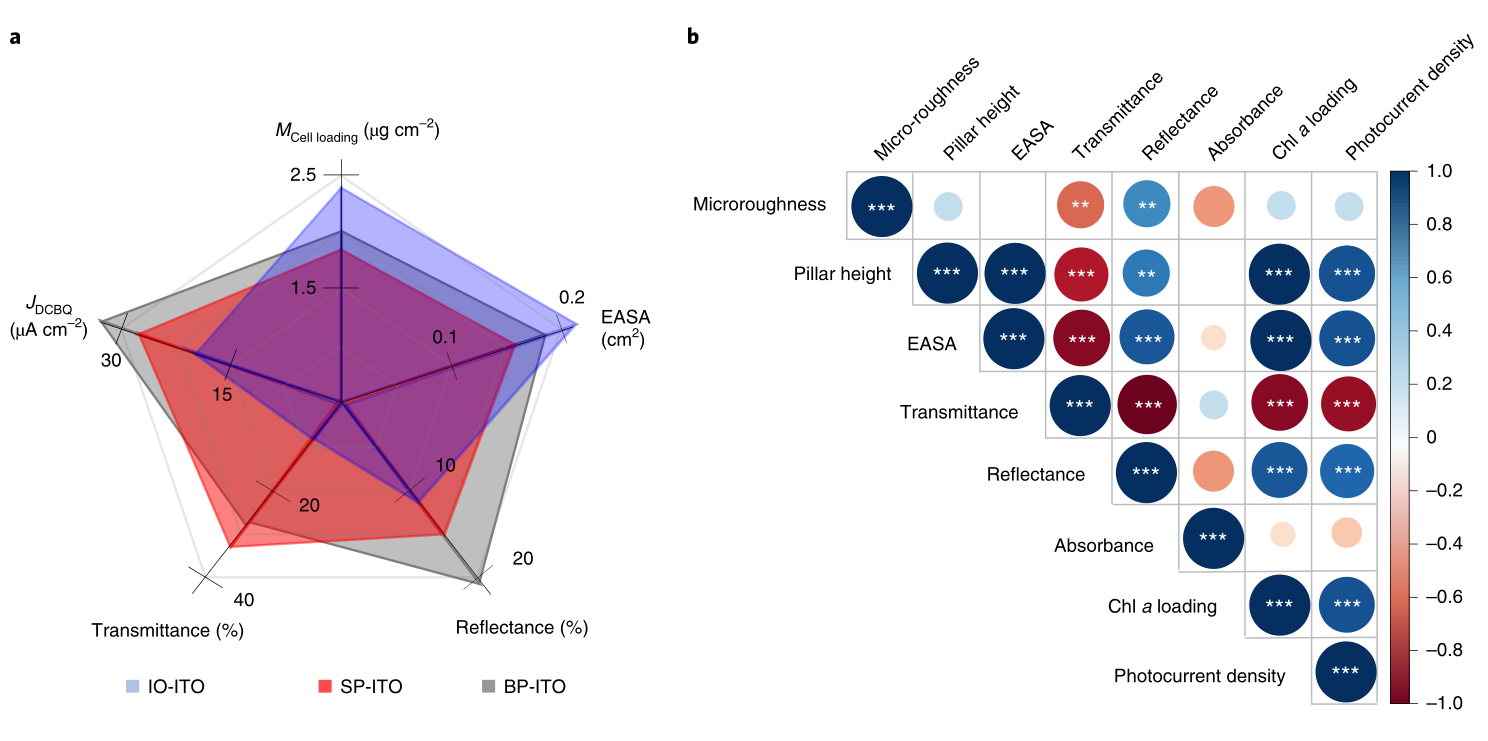On March 7, 2022, researchers at the University of Cambridge published a study related to additive manufacturing technology in Nature Material. The research is mainly divided into the following three aspects:
● developed aAerosol jet printing methodfor efficient and reproducible fabrication of nanoparticles made from ITOMicro-pillar electrode.Tunable structures spanning five orders of magnitude scale can be obtained in one go by this printing method.Hierarchical micropillar array electrodes,This is not possible using other manufacturing methods.
●ResearchersTuning the electroactive surface area on different length scales by changing the height and surface roughness of the micropillarsand compared their performance with state-of-the-art IO-ITO electrodes.
● Expands current understanding of electrode structure-activity relationships, andObtained a new generation of high-performance photosynthesis electrodes.
Research Background:
biologyCatalysts can be electrochemically attached to electrodes for biotechnological applications or basic research.especiallyCyanobacteria(Photosynthetic bacteria), cyanobacteria are biocatalysts that can use photosynthesis to generate electricity. At present, the semi-artificial method of using cyanobacteria for solar power generation is still in its infancy, and the achievable photocurrent density of cyanobacterial electrodes is between 340 μm·cm-2 and 2400 μm·cm-2 (energy conversion efficiency is higher than that of industrial biofuel production). higher).However, the photocurrent produced by the cyanobacterial electrode was two orders of magnitude lower than this value. To obtain larger photocurrents, electron mediators are usually placed artificially to maximize the collection of electrons from the photosynthetic electron transport chain.The bottleneck of current output is the electrode itself.
In photoelectrochemical reactions, the electrode structure must balance larger catalyst size with lower overall loading. The state-of-the-art electrode structure in protein film and biofilm photoelectrochemistry is the inverse opal (IO) pore structure, which is made of various metal oxides. The more commonly used is indium tin oxide (ITO), which exhibits certain inertness, conductivity, light scattering and biocompatibility. research shows,The combination of macroporous structure (providing large electroactive surface area and facilitating biocatalyst penetration) and ultrastructure (facilitating biocatalyst adhesion) in the layered structure is important for the distribution of biocatalysts.When PCC6803 (Synechococcus) was immobilized on the IO-ITO electrode, a photocurrent density of 14 μm·cm-2 and an external quantum efficiency of 2.7% were obtained.
Development of electrode designs has been hampered by the lack of general fabrication techniques capable of producing hierarchical micropillar array electrodes spanning large length dimensions.
research content
1. Printing Micropillar Array Electrodes
Aerosol jet printing of ITO electrodes Aerosol jet printing is an additive manufacturing technology that enables the printing of metallic nanoparticle inks by non-contact direct writing with high design flexibility, resolution, and material deposition accuracy. The researchers used a special ink to print the graded micropillar array electrode under the optimal printing parameters, and obtained a smooth micropillar array of ITO nanoparticles (below (d)) and a branched micropillar array of ITO nanoparticles (below). Figure (e)).

△ Aerosol jet printing of micropillar array electrodes. (a) Schematic diagram of the printing process; (b) printing parameters for producing micropillars; (c) printing parameters for generating submicron roughness; (d) smooth micropillars ITO (SP-ITO); (e) branched micropillars ITO (BP-ITO)
2. Main Characteristics of Micropillar Array Electrodes
Through the test of light transmittance and scattering rate, the researchers found that the electrode containing Synechococcus can obtain greater light-collecting capacity by using the micro-column and micro-branched structure.

Δ(a) Schematic illustration of the interaction of the exposed electrode with light. (b) Schematic diagram of the interaction of fixed cells with light
Compared with IO-ITO, the cells on SP-ITO were more densely distributed, but the cells on BP-ITO were most densely distributed, which could form sheet-like biofilms.

△(g) Confocal microscope image—cross section of electrode; (h) Scanning electron microscope image—cross section of electrode
When the height of the micropillar was increased to 600 μm, the photocurrent density was as high as 245 μA·cm-2, and the external quantum efficiency was as high as 29%.

△Photoelectrochemical performance of the optimized Synechococcus-supported BP-ITO electrode (column height 600 μm) under different intensities of white light
3. Explore the electrode structure-activity relationship
The researchers made two comparisons:
● Three different electrode structures were fabricated and compared with the same ITO nanomaterial, height and geometric area.
• Comparison between micropillar ITO electrodes of different heights and surface roughnesses.

△Contrast diagram of electrode structure-activity relationship
In comparison, it was found that the mediated photocurrent density produced by the Synechococcus-loaded BP-ITO electrode (50 μm high) was two times higher than that of the Synechococcus-loaded IO-ITO electrode; the photocurrent of the Synechocystis-loaded BP-ITO electrode The density is 312A·cm-2, which is significantly higher than that of the SP-ITO electrode of 212A·cm-2, which is due to the significant enhancement of EASA caused by micro-branching.
The electrode pillar height was significantly positively correlated with its EASA, which indicated that the larger surface of the higher pillars provided more places for the loading of Synechococcus and improved the light trapping performance within the structure. There is no significant correlation between micropillar roughness and photocurrent density. Micro-roughness is significantly positively correlated with reflectivity, suggesting that micro-roughness is important for introducing favorable photonic effects.
Summarize:
Researchers at the University of Cambridge have found that printing layered electrode structures through additive manufacturing can increase the amount of photosynthetic bacteria attached, which can generate higher photocurrents, improve the conversion efficiency of solar energy, and outperform many current biofuel power generation methods.
Note: The content of this article has been slightly adjusted, if necessary, you can view the original text.
Adapted from the original:https://doi.org/10.1038/s41563-022-01205-5
(responsible editor: admin)


0 Comments for ““Nature Material”: Using aerosol jet technology to fabricate graded micropillar electrodes to help photosynthetic bacteria “generate electricity””